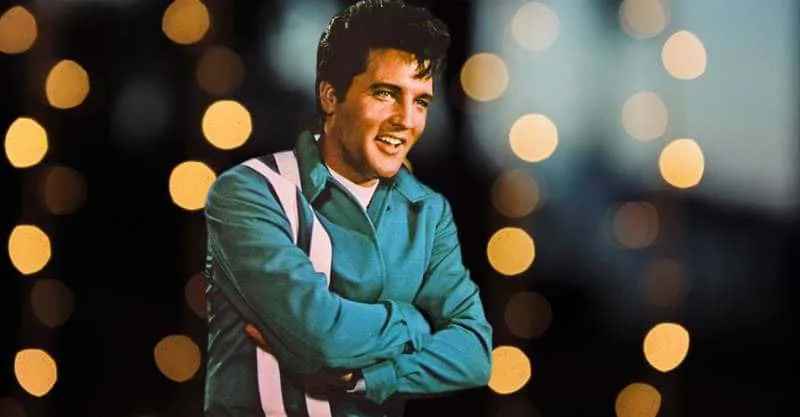John Lennon, one of the most influential musicians of the 20th century, was born on October 9, 1940, in Liverpool, England. Known for his role in The Beatles and his solo career, Lennon left an indelible mark on music and popular culture. But before he became a global icon, he was just a boy growing up in post-war Britain.
Early Life in Liverpool: When John Lennon Was Born

When John Lennon was born, the world was in the midst of World War II. Liverpool, a major port city in England, was heavily bombed during the war, and the city’s children grew up amid the rubble and uncertainty. Lennon’s early life was marked by the instability of his family situation. His parents, Julia and Alfred Lennon, had a tumultuous relationship, and by the time Lennon was five, they had separated.
Lennon’s mother, Julia, was a free spirit who loved music and was known for her sense of humor. However, she was unable to provide a stable home for John, so he was sent to live with his Aunt Mimi and Uncle George in a more affluent part of Liverpool, called Woolton. Aunt Mimi, a strict and no-nonsense woman, raised Lennon with a firm hand, emphasizing discipline and education. Despite this, Lennon remained close to his mother, who lived nearby and frequently visited him.
A Prankster and Troublemaker: The Mischievous Side of Young John

As a child, Lennon was known for his mischievous nature. He was a prankster who loved to play jokes on his classmates and teachers. His quick wit and sharp tongue often got him into trouble, but they also made him popular among his peers. Lennon’s sense of humor was irreverent, and he had a knack for seeing the absurdity in everyday situations.
Lennon’s rebellious streak was evident from a young age. He disliked authority and often clashed with teachers at school. He found the rigid structure of the classroom stifling and preferred to spend his time daydreaming or doodling in his notebooks. His school reports frequently described him as a “troublemaker” and noted that he had a tendency to disrupt the class. Despite his intelligence, Lennon struggled academically, and his grades were often poor.
A Budding Artist: Lennon's Early Passion for Drawing

One of Lennon’s earliest passions was drawing. He had a vivid imagination and spent hours creating intricate sketches and cartoons. His drawings often featured grotesque figures and exaggerated caricatures, reflecting his love for the absurd and the surreal. Lennon’s artistic talent was evident to those around him, and his schoolmaster recognized his potential, suggesting that he might pursue a career in art.
Despite his academic struggles, Lennon’s artistic abilities were a bright spot in his otherwise troubled school life. His Aunt Mimi, who had high expectations for him, initially disapproved of his interest in art, believing it to be a frivolous pursuit. However, she eventually came to see it as a way for Lennon to channel his energy and creativity.
Lennon’s love of drawing would continue throughout his life, even as his focus shifted to music. His early interest in visual art influenced his later work, particularly in the creation of album covers and illustrations for his books. His whimsical and often dark sense of humor can be seen in many of his drawings, which remain an important part of his artistic legacy.
A Complicated Relationship with His Parents: The Impact of Family
:max_bytes(150000):strip_icc():focal(1016x627:1018x629)/john-lennon-parents-1-9931987fcca5412789e46c0eaf714bba.jpg)
Lennon’s relationship with his parents was complicated and would have a profound impact on his personality and his music. His father, Alfred Lennon, was a merchant seaman who was often away from home. When he returned from sea, he attempted to take John away to live with him, leading to a dramatic showdown between John’s parents. In the end, Lennon chose to stay with his mother, but the experience left him with deep feelings of abandonment and betrayal.
Lennon’s mother, Julia, was a significant influence on him, particularly in his love for music. She taught him to play the banjo and introduced him to the music of Elvis Presley and other rock ‘n’ roll artists. Julia’s playful and carefree attitude contrasted sharply with Aunt Mimi’s strictness, and Lennon often felt torn between the two.
Tragically, Julia was killed in a car accident when Lennon was just 17 years old. Her death devastated him and left a lasting scar. The pain of losing his mother is evident in many of Lennon’s later songs, including “Mother” and “Julia,” where he expresses his longing and grief.
School Days: The Road to Rock ‘n’ Roll

Lennon’s school life was marked by a lack of academic success but an abundance of creativity and rebellion. He attended Quarry Bank High School, where he continued to be a troublemaker, often getting into fights and clashing with teachers. Despite this, he formed close friendships with a group of boys who shared his love of music and mischief.
It was during his school days that Lennon formed his first band, The Quarrymen, named after his school. The band played skiffle, a type of folk music popular in Britain at the time, and Lennon quickly became the leader. The Quarrymen would eventually evolve into The Beatles, but at this stage, they were just a group of friends having fun and playing music.
Lennon’s rebellious attitude extended to his appearance as well. He adopted the “Teddy Boy” look, a style popular among working-class youth in Britain, characterized by greased-back hair, drape jackets, and tight trousers. This was another way for Lennon to express his individuality and his rejection of societal norms.
The Influence of Art School: A New Path for Lennon

Recognizing that Lennon was unlikely to succeed academically, his schoolmaster suggested that he attend art school, where his talents could be nurtured. In 1957, Lennon enrolled at the Liverpool College of Art, marking a new chapter in his life. Art school provided Lennon with an environment where he could explore his creativity and connect with like-minded individuals.
It was at art school that Lennon met Stuart Sutcliffe, a talented artist who would become a close friend and an early member of The Beatles. Sutcliffe’s influence on Lennon was significant, particularly in terms of his artistic sensibilities and his approach to life. The two shared a love of modern art and spent hours discussing music, literature, and philosophy.
Art school also allowed Lennon to develop his skills as a writer. He began writing poetry and short stories, many of which were filled with the same wit and irreverence that characterized his drawings. This love of wordplay would later become a hallmark of his songwriting.
The Seeds of The Beatles: Lennon’s Musical Awakening
While art school provided Lennon with a creative outlet, it was music that truly captured his heart. The influence of American rock ‘n’ roll, particularly the music of Elvis Presley, Chuck Berry, and Buddy Holly, ignited a passion in Lennon that would define his life. He began to see music as a way to express himself and connect with others, and his focus shifted from art to forming a band.
The Quarrymen, with Lennon as the leader, began to gain more attention in Liverpool, playing at local clubs and parties. It was through The Quarrymen that Lennon met Paul McCartney, who would become his songwriting partner and close friend. McCartney’s musical abilities and shared passion for rock ‘n’ roll impressed Lennon, and the two quickly formed a partnership that would lay the foundation for The Beatles.
The Making of a Legend
John Lennon’s childhood was marked by a blend of mischief, creativity, and a search for identity. From his early days as a prankster and troublemaker to his budding talent as an artist and musician, Lennon’s formative years laid the groundwork for the man he would become. His experiences growing up in post-war Liverpool, his complicated family relationships, and his rebellious spirit all played a role in shaping his unique personality and worldview.
When John Lennon was born, no one could have predicted the impact he would have on the world. Yet, even as a child, the seeds of his future greatness were evident in his creativity, his passion for music, and his refusal to conform. These early experiences would not only influence his music but also his approach to life, making John Lennon the icon he is remembered as today.
This article, optimized with the keyword "when John Lennon was born," provides an in-depth look at the early life of John Lennon, offering insights into the factors that shaped one of the most influential musicians of all time.



